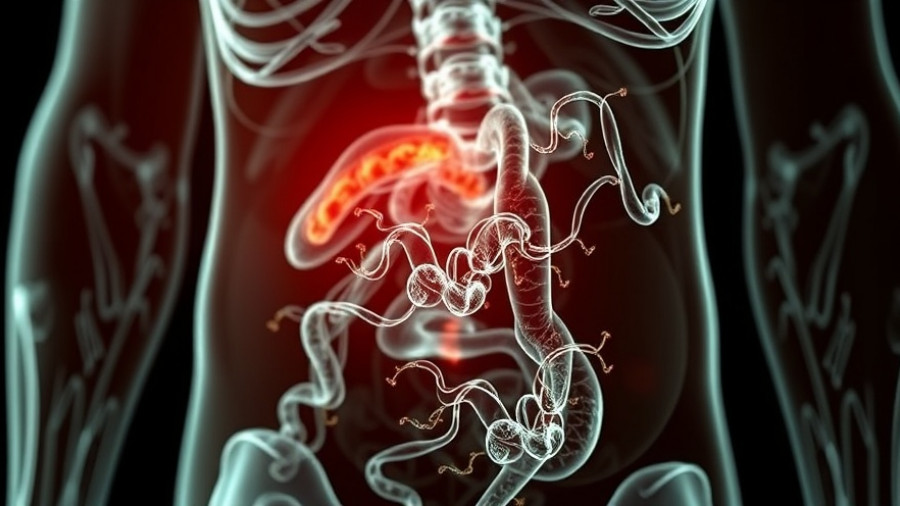
The Future of Obesity Treatment: Neumora's Revolutionary NMRA-215
Neumora Therapeutics has recently made headlines with its groundbreaking approach to treating obesity through the NLRP3 inhibitor NMRA-215. During their October 27th R&D Day, the company showcased promising preclinical results, suggesting that NMRA-215 could pave the way for a new era in obesity management. As obesity continues to rise globally, with projections indicating that the obesity drug market may reach between $130 billion and $170 billion by 2030, advances like NMRA-215 are timely and essential.
A Novel Mechanism for Effective Weight Control
What sets NMRA-215 apart from current therapies like GLP-1 receptor agonists is its unique targeting mechanism. Unlike traditional incretin-based drugs that primarily influence appetite through the GLP-1 pathway, NMRA-215 works by inhibiting NLRP3-mediated inflammation. This pathway has been recognized for its role in both metabolic dysfunction and appetite regulation. By addressing neuroinflammation within the central nervous system, Neumora aims at creating not just weight loss but also an improvement in insulin sensitivity—thereby offering a holistic approach to obesity treatment.
Impressive Preclinical Results
The results from studies involving diet-induced obesity (DIO) mouse models have been particularly noteworthy. NMRA-215 has demonstrated impressive efficacy, leading to a weight reduction of up to 19% as a standalone therapy and as much as 26% when administered in conjunction with semaglutide. Importantly, these studies also indicated that NMRA-215 preserved lean body mass while significantly enhancing biomarkers related to liver health and lipid balance. This preservation of lean mass is crucial, as it suggests that the treatment may not just induce weight loss but also contribute positively to overall body composition.
The Potential for Clinical Trials and Market Impact
Neumora is gearing up for Phase 1 clinical trials, expected to begin in early 2026, which will evaluate NMRA-215 both as a monotherapy and in combination treatments. The ongoing DIO mouse study also aims to assess NMRA-215's effectiveness as a maintenance therapy post-weight loss with results anticipated early next year. Healthcare professionals and pharma executives alike are keenly watching these developments, as NMRA-215 could potentially serve as an oral alternative to existing injectables—providing convenience and possibly fewer gastrointestinal side effects.
Implications for Pharmaceutical Sales and Market Strategies
The introduction of effective oral therapies like NMRA-215 could significantly reshape pharmaceutical market dynamics. Pharmaceutical sales reps and executives will need to adapt their strategies to highlight the benefits of this innovative treatment, focusing on its unique mechanism and potential accessibility compared to injectables. As competition in the obesity drug landscape intensifies, understanding how to market NMRA-215 effectively will be crucial for success. Payer engagement strategies will also play a vital role, as formulary decisions will ultimately determine the market access of this promising new drug.
Broader Context: What This Means for Obesity Treatment and Pharma
The need for effective obesity management continues to escalate, reflecting the growing awareness of its associated health risks, including diabetes, heart disease, and numerous other metabolic disorders. As conditions related to obesity gain prominence globally, advancements such as NMRA-215 represent a critical hope in the drug development pipeline. The diversified approach of Neumora, focusing not only on weight loss but also on metabolic health, signals a shift in how the pharmaceutical industry may tackle obesity moving forward.
Looking Ahead: The Road to Market
Anticipation builds as we look towards 2026 for initial human trials of NMRA-215. If the data confirms safety and efficacy in metabolic benefits, it could signify a landmark achievement in the realm of obesity treatments. A positive reception may alter market dynamics dramatically, especially for pharmaceutical marketers and healthcare product launches aimed at addressing obesity. For now, professionals in the pharma and biotechnology sectors will want to keep a close eye on how Neumora's journey unfolds.
As the biotech industry continues to innovate, the introduction of NMRA-215 may not only transform the obesity treatment landscape but also redefine pharma marketing strategies in response to evolving patient needs.
 Add Row
Add Row  Add
Add 




Write A Comment